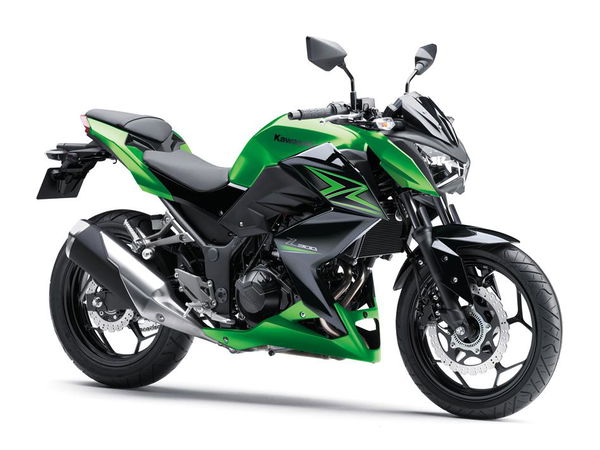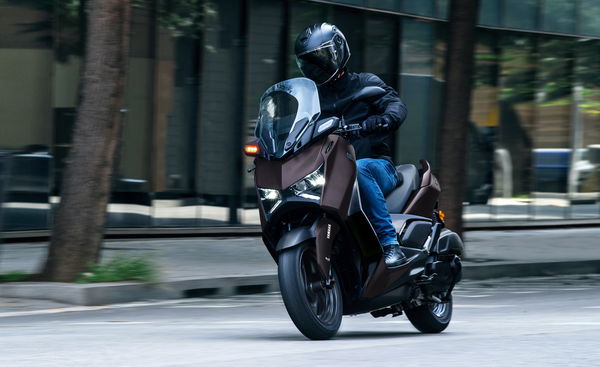Top 10 Euro3 bikes to buy before they’re gone
Time’s running out for Euro3-spec machines…

The Euro4 exhaust emissions limits came into force at the start of 2017. They brought along a host of other legal changes including mandatory ABS brakes on new bikes over 125cc and dozens of other tweaks to the law. And at a stroke they made a huge swathe of bikes obsolete.
Fortunately for manufacturers still trying to recoup the development costs of these newly non-compliant machines, our EU overlords built in a period of grace. The so-called ‘derogation’ rules allowed bike firms to keep selling old, Euro3-spec machines provided they don’t make up more than a small slice of their overall output, and on the condition that those non-compliant bikes were just serving out their notice until they were discontinued.
But the rules only allowed a maximum of two years of derogation. So come January 1, 2019, all those Euro3-spec bikes need to have been sold.
What comes in their place will depend on their makers. Some will be superseded by newer, better bikes. But if sales don’t warrant the massive R&D input needed to create such successors, they’ll be gone for good.
Here are our top 10 Euro3 survivors, all destined for replacement or discontinuation by the end of this year. Grab them while you can.
10: Kawasaki Z300
This year the Ninja 300 has gone, replaced by the new Ninja 400. But for the moment the naked Z300 soldiers on, still powered by the old non-Euro4 engine. For 2018, Kawasaki has three options. One: ditch the Z300 altogether. Two: slot in the revised, Euro4-spec motor from the Versyx-X 300. Three: Pull the bodywork off the new Ninja 400 to create a naked ‘Z’ version. The last of those is by far the most likely – and clearly the best – option. But until we know for certain that a replacement is coming, there remains the possibility that there will be no successor to the Z300 at all.
9: Honda F6C Valkyrie
You’ve really got to want a Honda F6C to pick one over the more ubiquitous V-twin cruiser options out there. But if you yearn for a flat-six cruiser then strike while the iron’s hot; there’s no sign that Honda will be swift to replace the F6C. While there’s a completely new Gold Wing this year, replacing both the old Wing and the bobber-style F6B, we’ve heard nothing of an F6C variant, and there’s little chance that sales of the old version are high enough to warrant its adaption to meet Euro4.
8: MV Agusta Brutale
MV’s four-cylinder Brutale dies at the end of this year, but will rise again in the form of a new, Euro4-legal machine. The firm’s openly announced that it’s got a new four-cylinder platform on the way, and the Brutale will surely be the lead version to be launched. We’re pretty sure it’ll be a looker, and it’s sure to be faster and better-equipped, but if you’ve got a particular passion for the current model then time is running out to get a new one.
7: MV Agusta F4
Like the Brutale, the four-cylinder F4 superbike is due to die this year. And while we can’t imagine that MV won’t be swift to replace it with something stunningly beautiful, it’s probably not quite as high a priority as the naked Brutale from a purely financial point of view. Buying a brand new F4 now, then, is a risk; it’s probably about to be replaced with something prettier, faster and more high-tech. But there’s a slim chance that it might not be replaced at all, leaving only secondhand machines to choose from if you really need one.
6: Triumph Rocket III
It’s the biggest purpose-made motorcycle engine ever created by a mainstream manufacturer, but the Rocket III’s longitudinally-mounted triple hasn’t had much investment over the last decade or so, and there’s no sign at the moment that Triumph is working on a revamped, Euro4-legal version of the bike. It might happen, but with the endless variations on the Bonneville currently breaking sales records for the British firm, we can imagine that an uprated Rocket isn’t high on its priority list. In that case, it could join the Daytona 675, Trophy 1200 and Sprint GT in the list of Triumphs sent to the knacker’s yard in 2018.
5: Kawasaki 1400 GTR
There aren’t many sports tourers out there that are as capable and well-equipped as the GTR. Its tech, including variable valve timing and tyre pressure sensors, was leagues ahead of the competition when it was launched a decade ago, and the spec-sheet still makes for an impressive read even today. But as it stands it’s not Euro4-legal. Making it meet the rules should be fairly straightforward, so hopefully there’s a revamped version on the way, but does Kawasaki’s supercharged H2 SX mean that the GTR isn’t required anymore?
4: Suzuki GSX-R600
The GSX-R600 – like most of its direct rivals – doesn’t meet Euro4. While Yamaha has seen it as worthwhile to uprate the R6 to suit the regulations, rivals like the CBR600RR and Daytona 675 have been left out in the cold. We hear rumours that Suzuki will follow Yamaha’s lead, making just enough changes to the GSX-R600 to squeeze through Euro4 testing, but until we see something concrete then we’ve got to assume that there are only a few months left for the smallest four-cylinder GSX-R model.
3: Kawasaki ZX-6R
Everything that we’ve said about the GSX-R600 also applies to Kawasaki’s ZX-6R. No doubt high-level discussions have long since been concluded over the model’s future. But weirdly Kawasaki didn’t invite us to take part in them, so we’re in the dark as to whether or not a replacement is in the offing when the current model’s derogation expires at the end of the year.
2: Suzuki Hayabusa
We’re 99 percent certain that Suzuki is going to replace the Hayabusa. Some say it will be superseded by a turbocharged maniac of a machine. Others claim it’s going to be a bigger-bore, normally-aspirated model. But either way the existing version is going to get the axe. Bearing in mind that 2019 will be the Busa’s 20th anniversary year, it’s probably safe to say the new version will be big news for the firm over the coming months. But if you particularly like the existing model, grab one while you still can.
1: Suzuki GSX-R750
Consider this an open plea to Suzuki: please, please don’t let the GSX-R750 wither on the vine. It might not be the obvious choice given the field of ever more spectacular 1000cc superbikes on the market, but its smaller capacity means it arguably hits a sweet spot that some more muscle-bound alternatives can’t pinpoint. An all-new GSX-R750, packed with technology to take it into the 2020s, is the stuff of dreams, but unless Suzuki’s accountants have been persuaded that such a bike makes sense, we might never see it happen.











